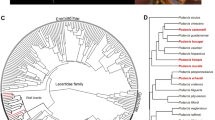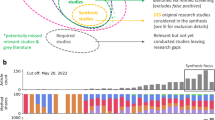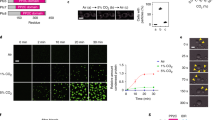Abstract
CARBON dioxide has been used as a narcotic for invertebrate animals for many years ; but the nature of its action is not yet understood. It has recently come into prominence in the discovery of strains of Drosophila sensitive and resistant to carbon dioxide (reviewed by l'Héritier1). In using carbon dioxide as a means of temporarily immobilizing aquatic invertebrates for extraction of blood samples, we have been struck by some remarkable interspecific differences in sensitivity and have been led to investigate the problem.
This is a preview of subscription content, access via your institution
Access options
Subscribe to this journal
Receive 51 print issues and online access
$199.00 per year
only $3.90 per issue
Buy this article
- Purchase on SpringerLink
- Instant access to full article PDF
Prices may be subject to local taxes which are calculated during checkout
Similar content being viewed by others
References
l'Héritier, Ph., Heredity, 2 (1948).
Author information
Authors and Affiliations
Rights and permissions
About this article
Cite this article
BEADLE, L., BEADLE, S. Carbon Dioxide Narcosis. Nature 164, 235 (1949). https://doi.org/10.1038/164235a0
Issue date:
DOI: https://doi.org/10.1038/164235a0



